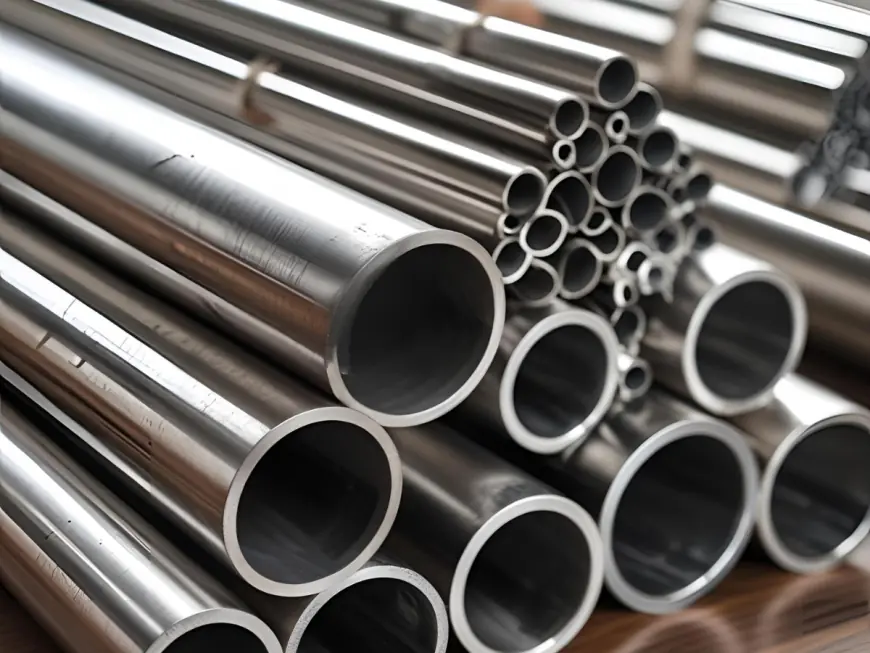Seamless Pipes: A Complete Guide to Features, Benefits, and Applications
Discover seamless pipes, their manufacturing process, features, types, and uses in industries like oil, gas, power, and construction. Learn why seamless pipes are a reliable choice.

Seamless pipes are essential in industries where safety and durability cannot be compromised. Unlike welded pipes, seamless pipes are produced without any joint or weld seam. This gives them superior strength, making them suitable for high-pressure, high-temperature, and corrosive environments.
In this guide, we will cover the basics of seamless pipes, their production process, advantages, types, and applications. By the end, you’ll understand why seamless pipes are considered the backbone of many industrial systems.
What are Seamless Pipes?
A seamless pipe is a hollow cylindrical product manufactured from a solid steel billet. The billet is pierced, elongated, and rolled to create a pipe without any welding. The absence of weld seams makes seamless pipes more reliable under demanding conditions.
These pipes are commonly used in oil and gas pipelines, boilers, chemical plants, and power plants. Their uniform structure ensures smooth fluid flow and long service life.
Key Features of Seamless Pipes
-
No Welded Joints: Offers greater strength and eliminates weak spots.
-
High Pressure Handling: Withstands extreme pressure and temperature.
-
Uniform Shape: Ensures consistency in diameter and thickness.
-
Corrosion Resistant: Available in carbon steel, stainless steel, and alloys.
-
Long Lifespan: Durable and cost-effective in long-term usage.
-
Versatility: Suitable for structural, mechanical, and fluid transport purposes.
How Seamless Pipes Are Made
The seamless pipe manufacturing process involves advanced techniques to achieve precision and strength.
1. Billet Preparation
Steel billets are selected based on grade and quality.
2. Heating
Billets are heated to a temperature where they become soft enough to be pierced.
3. Piercing Process
A mandrel pierces the billet to create a hollow center.
4. Elongation and Rolling
The hollow billet is elongated and rolled to achieve desired wall thickness and diameter.
5. Sizing
The pipe undergoes sizing to meet accurate dimensional requirements.
6. Heat Treatment
Heat treatment improves mechanical strength and corrosion resistance.
7. Testing
Non-destructive tests such as ultrasonic testing, eddy current testing, and hydrostatic tests ensure quality.
8. Finishing
Pipes are cut, surface-treated, and prepared for delivery.
Types of Seamless Pipes
1. Carbon Steel Seamless Pipes
-
Affordable and durable.
-
Used in oil, gas, and power industries.
2. Stainless Steel Seamless Pipes
-
Resistant to rust and corrosion.
-
Widely used in food, chemical, and pharmaceutical industries.
3. Alloy Steel Seamless Pipes
-
Enhanced mechanical properties.
-
Suitable for boilers, turbines, and heat exchangers.
4. Duplex Steel Seamless Pipes
-
High strength and corrosion resistance.
-
Common in offshore and marine projects.
5. Nickel Alloy Seamless Pipes
-
Excellent performance in extreme environments.
-
Used in aerospace, marine, and chemical plants.
Standards for Seamless Pipes
Seamless pipes are produced according to international standards for quality and compatibility.
-
ASTM A106: Carbon steel pipes for high-temperature service.
-
ASTM A312: Stainless steel seamless pipes.
-
ASTM A335: Alloy steel pipes for power plants.
-
API 5L: Seamless line pipes for oil and gas pipelines.
-
DIN / EN / JIS: Global standards widely followed across industries.
Benefits of Seamless Pipes
-
Higher Safety: No weak weld points reduce failure risks.
-
Better Flow Efficiency: Smooth interior ensures uninterrupted flow.
-
Durability: Stronger and longer-lasting than welded pipes.
-
Versatile Applications: Works in construction, automotive, aerospace, and energy sectors.
-
Cost-Effective: Long service life lowers replacement costs.
Applications of Seamless Pipes
Seamless pipes are versatile and used in almost every industry that requires strong, leak-proof piping systems.
-
Oil and Gas Industry – Drilling, transport, and refining operations.
-
Power Plants – Boilers, heat exchangers, and steam lines.
-
Chemical and Petrochemical – Safe transport of chemicals and gases.
-
Construction – Structural frameworks, columns, and supports.
-
Automotive Industry – Fuel lines, hydraulic systems, and exhausts.
-
Shipbuilding and Marine – Offshore pipelines and seawater systems.
-
Aerospace Industry – High-performance piping for aircraft systems.
Seamless Pipes vs. Welded Pipes
| Aspect | Seamless Pipes | Welded Pipes |
|---|---|---|
| Strength | Higher, no weld seam | Slightly lower due to weld seam |
| Pressure Resistance | Excellent | Moderate |
| Cost | Higher | Lower |
| Applications | Critical, high-pressure | General, low-pressure |
| Lifespan | Longer | Shorter |
Why Industries Prefer Seamless Pipes
Industries choose seamless pipes when reliability and safety are a priority. Their ability to perform under extreme conditions makes them indispensable. Even though the initial cost is higher than welded pipes, seamless pipes offer better long-term performance, reducing downtime and maintenance expenses.
Conclusion
Seamless pipes have become a backbone of modern industries. Their strength, reliability, and resistance to pressure and corrosion make them ideal for oil, gas, power, chemical, construction, and automotive sectors. With a wide range of types and standards available, seamless pipes provide unmatched performance for critical applications.
Whether you need pipes for transporting fluids, building structures, or operating in extreme environments, seamless pipes are the most dependable choice.
What's Your Reaction?
 Like
0
Like
0
 Dislike
0
Dislike
0
 Love
0
Love
0
 Funny
0
Funny
0
 Angry
0
Angry
0
 Sad
0
Sad
0
 Wow
0
Wow
0



























































